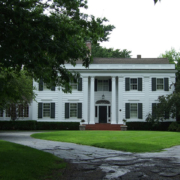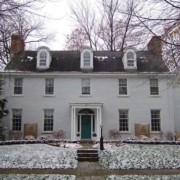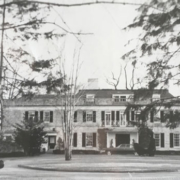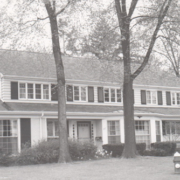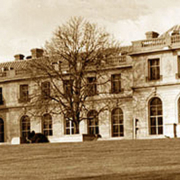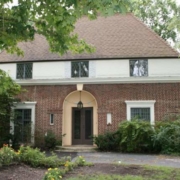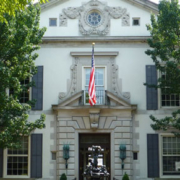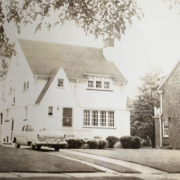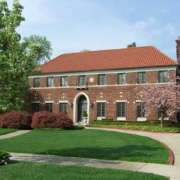Historical Architecture of Grosse Pointe – A Turn of the Century Classic – 71 Lake Shore
As with all forms of art it is always good to remind ourselves of the classics – a Jane Austen novel, a play by Molière, a painting by Constable or a turn of the century summer cottage on Lake Shore.
The last remaining summer cottages on Lake Shore are few and far between, but a small number of wonderful examples still remain – located at 207, 301, and 365 Lake Shore.*
The year is 1880, Grosse Pointe is fast becoming a summer colony for the wealthy. The crème de la crème of Detroit’s society have chosen to build a number of summer homes facing the lake St. Clair, giving their new residences names such as Maplehurst, Tonnancour, Summerside, Cloverleigh and The Poplars.
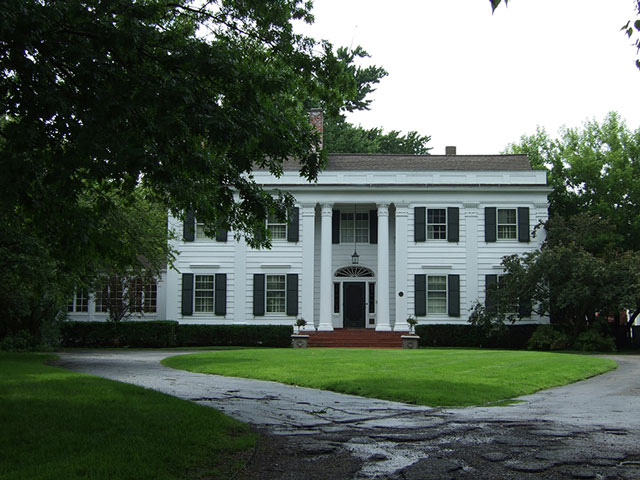
The Poplars – named after a row of Lombardy poplar trees – is located at 71 Lake Shore, built in 1884. It is a pretty Queen Anne cottage designed for William A. McGraw, the son of A.C. McGraw whose firm A. C. McGraw was one of the most successful commercial firms in Detroit. William McGraw was a successful business men in his own right, head of a prosperous wholesale boot and shoe company, he was considered one of the most leading and influential men in the city. He married Harriet A. Robinson, a niece of John S. Newberry, and they had four children.
Mrs. McGraw was known throughout the city as a prominent player in philanthropic and club circles. She was an active member of the 20th Century Club, the Women’s City Club, the League of Women Voters, and the National Women’s Party. She was also the chairman of the first Red Cross Stamp Committee.
The McGraw’s moved into their new home in 1884. The photo’s below depict a Shingle style house with wrap-around porch, bay windows and a turret. The house was surrounded by tree’s, including many poplar tree’s (hence the name) and a large Osage orange hedge that defined the front of the property.
The house was situated on a massive 10-acre lot that was originally a ribbon farm stretching from Lake St.Clair to Grosse Pointe Blvd, including a little park that ran down to the lake. It is said the interior of the home was a model of convenience and it’s general finish was admired by all. It is not clear of the size and the layout of the original home, but it is believed there were 14 rooms, including 5 bedrooms. **
In 1924 Percival Dodge purchased the property. The pretty Queen Anne Cottage underwent a dramatic transformation, and in the hands of prominent Grosse Pointe architect Robert O. Derrick the house became the handsome Colonial home as we know it today.
On completion of the extensive modifications the house had increased in size to 5,950 sq ft (prior to the remodel the lot size had already been reduced to 3 acres), and was constructed of wood with brick ends. 71 Lake Shore was now a large two-story home with exceptional features, and architectural details, including 7 natural fireplaces and high ceilings.
The first floor features a large living room (29’ x 19’) that leads to a flower room and the terrace overlooking the historic gardens. An extensive kitchen (29’ x 12’) is located in the center of the floor plan, which leads to a wood paneled library (17.5’ x 18) and the dining room (13’ x 17’).
The second floor is home to 9 bedroom’s, 4 bathrooms, along with a sewing room and a dressing room off the master bedroom.
The home has seen a lot of change during its 130 years, and it is entirely possible 71 Lake Shore can lay claim to the title of ‘the house that has undergone the most radical alterations’. However, the core of the house still remains, and despite its new façade it can certainly be described as one of the classic homes to adorn Lake Shore. It may not be as authentic as a Jane Austen novel, but it is certainly one of a kind.
Written by Katie Doelle
© 2015 Katie Doelle
*Lakeshore was originally an early Indian trail, and later became a well-traveled route along the lake. In 1851 the road became known as Jefferson Avenue, and in 1915, the section of Jefferson Avenue located in Grosse Pointe was officially named Lake Shore Rd.
**William A. McGraw passed away in 1898 aged just 47, but Mrs. McGraw would reside in the property for a total of 35 years.

